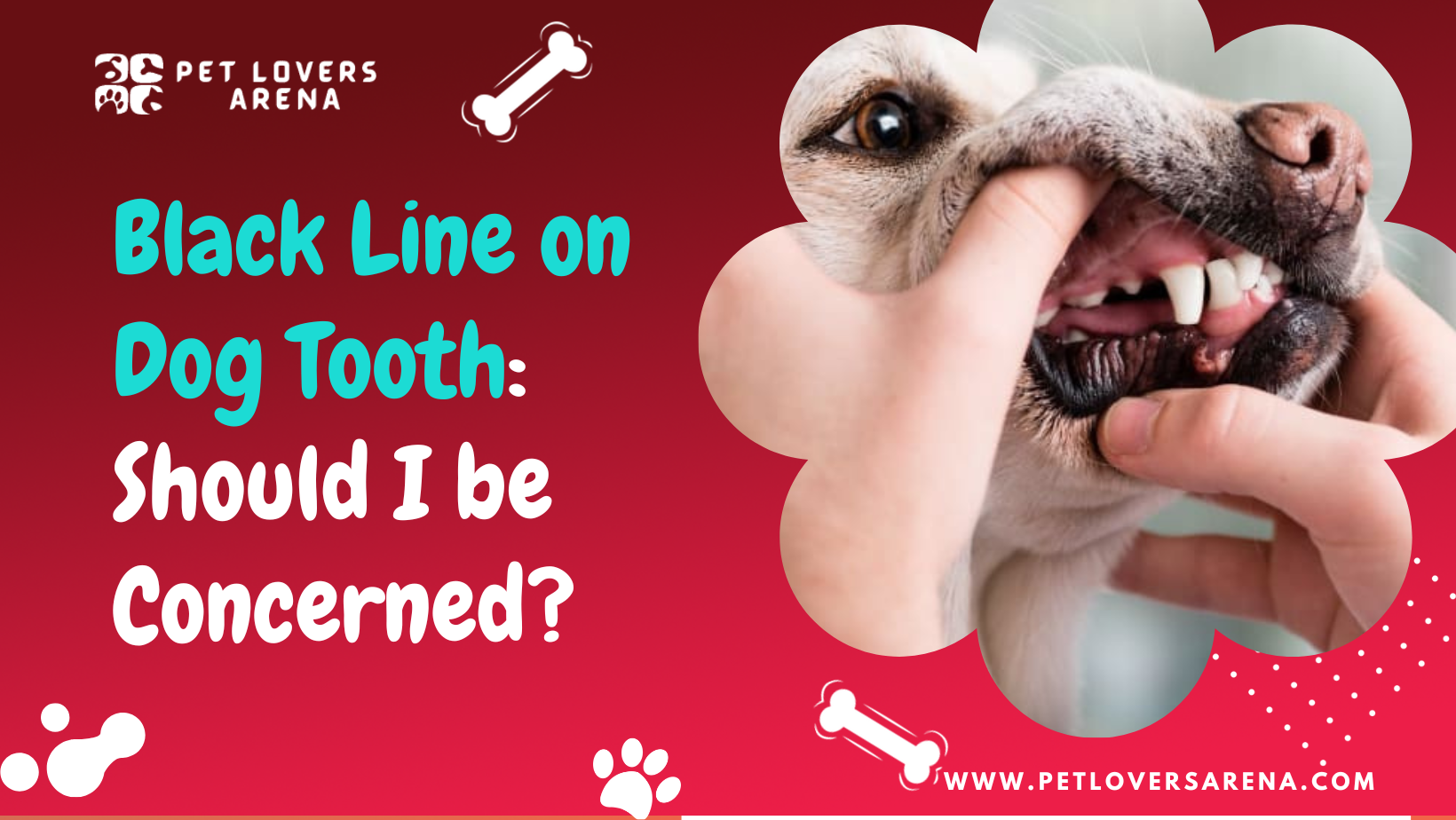Are you one of those dog parents who has recently discovered a black line on the tooth of your furry friend? You are surely puzzled about this discovery and are wondering what it is and if you should be concerned about it.
This is a condition that is common among dogs with dental issues. You must be careful of your dog’s symptoms in case they are in pain.
You must have noticed that dogs chew on a range of things, which can result in a black or silver-colored stain on their teeth. This may not be a cause of concern in most cases. However, when it comes to petting dogs, it is best to keep a record of every change in their appearance or behavior to be safe.
However, there is a growing concern among dog parents regarding the dental issues of their pets. These issues need to be monitored from the onset of the symptoms to ensure that the severity of the situation can be predicted early on and the necessary treatment can be provided based on the symptoms.
Recognizing Periodontal Disease In Canines
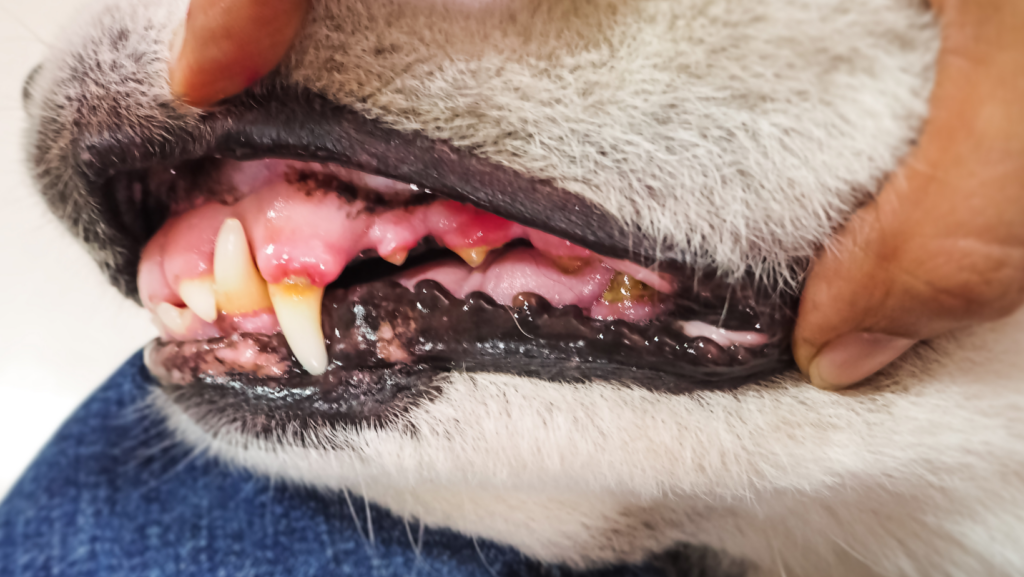
It is a good sign that your dog may have this condition if the black lines emerge along the gum line where the gums meet the teeth. Gum disease, commonly known as periodontal disease, is a complex condition that can be roughly divided into four stages, from gingivitis to severe periodontitis.
Gingivitis, a disorder where the gums become inflamed, is brought on by accumulating germs from inadequate oral hygiene.
Plague: The First Stage
Plaque, a substance that causes dark stains on teeth along the gum line, accumulates in the early stages of periodontal disease.
Halitosis, or foul breath, is another prevalent indicator of early periodontal disease.
Immune cells are increasingly directed to the damaged location in the blood flow to fight the bacteria developed along the gum line.
Gingivitis is a disorder that causes the gingiva, the gum area between teeth, to swell, turn red, and become brittle.
The presence of too many bacteria in your dog’s mouth can lead to a black lining, and this happens mostly due to insufficient dental hygiene. This condition must be dealt with as quickly as possible, as it can lead to tooth decay.
Tartar: The Second Stage
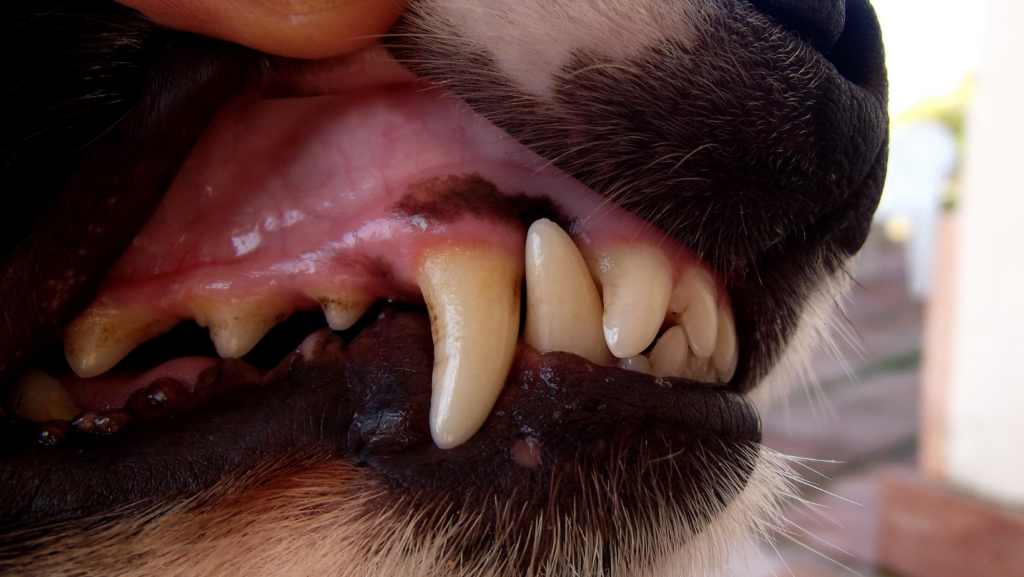
Some teeth may become loose during the second stage of periodontal disease because the bone that supports them may deteriorate.
As the bacteria spread along the teeth and below the gums at this stage, dog owners may notice the first black lines along the gum line.
It takes plaque about three days to mineralize into tartar. The main ingredient that causes the color black is tartar, which also offers a better surface for plaque deposition.
You might also start to notice early indications of gum recession and deeper periodontal pockets, foul breath, and swollen gums. Periodontitis frequently manifests itself first and visibly with receding gums.
While tartar accumulation is not intrinsically harmful, it may lead to other problems, like bacterial infections. At times, tartar can also imply serious conditions like heart disease. Tartar deposits don’t always have to be black. It can be brown, orange, and yellow as well.
Dental Disease: The Third Stage
More tartar will have developed by stage three of the disease as the plaque mineralizes. The tooth of a dog may develop a dark line due to increased tartar deposits.
Due to the progressive chipping away of a large portion of the supporting structures surrounding the teeth at this point, it can be challenging to assess the degree of the damage.
There would be more irregular gum pockets and a greater degree of bone loss at this time.
There may be increased gum recession and possible tooth loss in addition to the typical symptoms listed in stage two, such as red, sensitive gums and bad breath.
At this point, most dogs suffer from some or the other kind of dental disease anyway. As per research reports, almost 4 out of 5 dogs suffer from some sort of dental disorder after they turn three years old. However, since the symptoms are quite mild, it may be difficult to ascertain the same.
Hence, we recommend you take care of your dog’s dental hygiene to ensure early detection of any underlying conditions.
As far as tooth staining is concerned, it can be caused by eating and drinking dark-colored liquids and biting and chewing on dark objects. Otherwise, it can also happen if your dog is on a particular medication.
The Fourth Stage
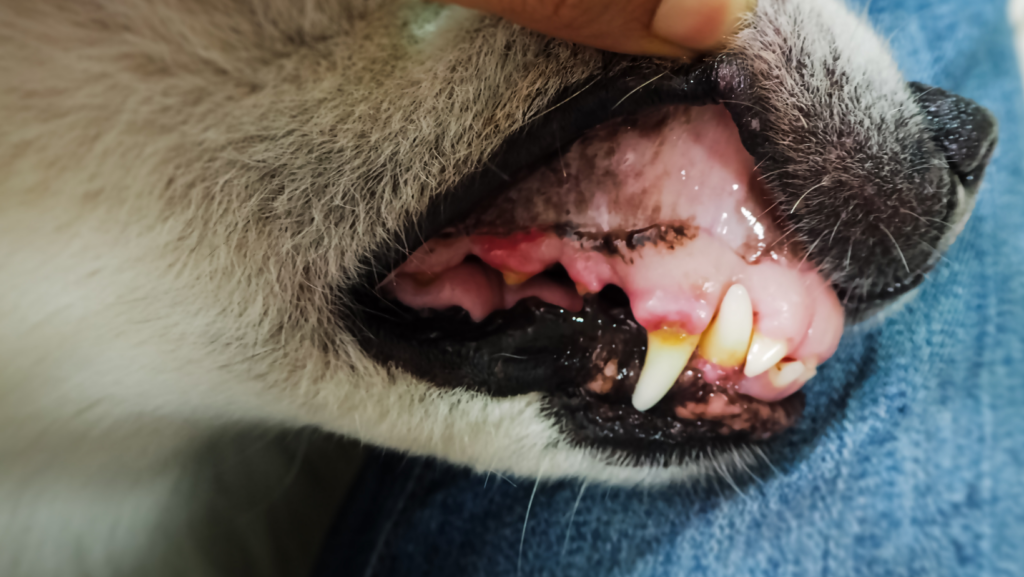
An X-ray and periodontal probing examination of the teeth and gums may show that the structural integrity of the teeth has been lost.
During this stage, signs might be detected, including pus production, exposed tooth roots, loose teeth, or tooth loss.
Your dog may suffer from other diseases in more severe periodontitis, such as organ damage or dental abscesses. As a result of the toxins that the bacteria can create being released into the circulation.
At this point, various procedures might be needed to address the infection in the mouth and additional problems in the tissues around it, such as those in the eyes and nose.
How Can Black Line Be Treated in Dogs?

Some tooth stains don’t even need to be treated. Endodontic (root canal) therapy or extraction treats stained, uncomfortable, or dead teeth. Your pet’s veterinarian will advise one of these two treatments based on the severity of the issue and the type of tooth involved.
Root canal therapy is another name for endodontic treatment. This procedure comprises extracting the dead pulp from the tooth, cleaning and disinfecting the cavity inside the tooth, and filling the cavity with materials that will stop germs from entering the tooth again. Root canal therapy keeps the tooth in your dog’s mouth and is less traumatic than extraction.
In situations where getting a root canal is not an option, surgical extractions are advised. The roots of a dog’s teeth extend deep into the jaw bone, making surgical extractions more intrusive than root canal therapy and more painful for your dog. Unfortunately, there are situations when surgery is the only choice.
What Can You Do to Take Care of Your Dog’s Teeth?
Well, as we mentioned earlier, most dogs suffer from some or the other dental disorders, and you need to take care of their dental issues.
To ensure proper dental hygiene for your dog, you can use tried and tested methods to prevent and cure your dog’s teeth from decaying. In this section, let us have a look at some of them.
1. Brush Your Dog’s Teeth
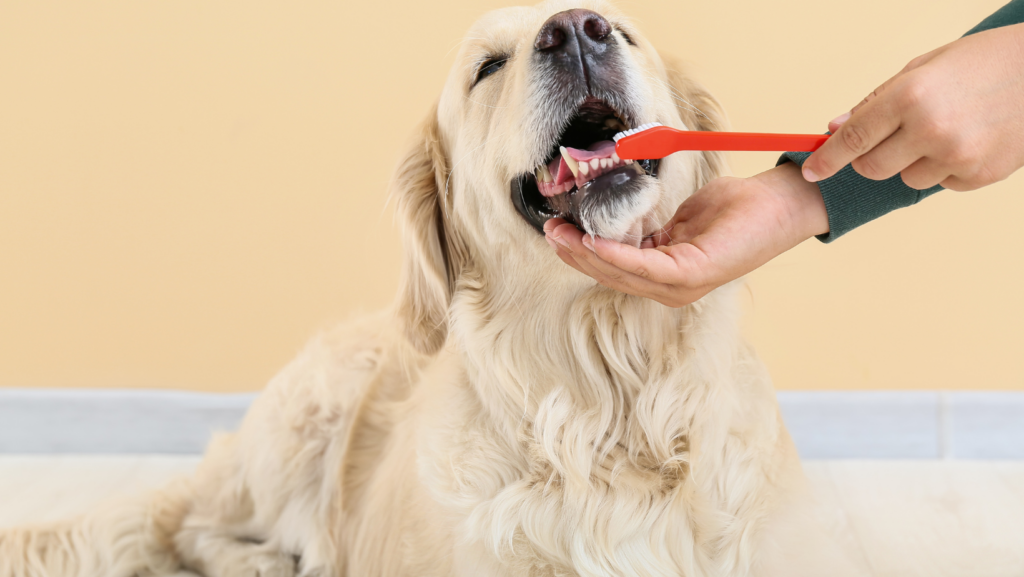
It is crucial to maintain the oral health of your pet. First, you must have observed them exploring their surroundings with their mouths.
It also means that they are bound to consume anything without their ability to distinguish between the good and the bad.
Brushing your dog’s teeth will ensure that your dog’s teeth remain healthy for a long time along with ensuring that whatever they have consumed has been cleaned from their mouth for that day.
For the best results, we recommend you use dog-friendly toothpaste. Treatment for the problem gets more challenging the more the germs harm the teeth. Therefore, practicing good oral care is always essential to prevent cavities from forming.
Additionally, cavities are very painful and can make chewing challenging. To relieve the itch and suffering brought on by the condition, your dog may slap their lips in the middle of the night.
2. Dental chews
We must understand the importance of maintaining our dogs’ dental health, which doesn’t stop at brushing their teeth. It goes beyond brushing their teeth, as many food particles can continue to remain in between their teeth even after brushing.
The solution is to get them dental chews to help eliminate the food particles stuck in the corners of their teeth where the brush doesn’t reach. There are multiple uses for dental chews for your pet.
These can also assist in dealing with plaque off your pup’s teeth. There are specialized treats for hard chewers, and you can choose the one that suits your dog’s nature.
These come in handy if your dog is aggressive and cannot find respite in playful activities. Getting them flavored chews can help them calm down while also ensuring that they remain busy without disturbing you for a long stretch.
3. Provide Them With a Low-Sugar Diet

The diet of any dog directly reflects the conditions of its teeth. Give it a diet that doesn’t contain much sugar, as it is the ideal food source for bacteria. Bacteria can produce harmful acids that can damage your dog’s strong teeth.
Also, providing your dog with a balanced diet is crucial to maintain its overall health. In cases when dogs do not get proper food, they tend to crave treats. Remember to provide them with a substantial diet to keep them whole.
4. Make Them Drink Plenty of Water
Give your dog ample fresh and clean drinking water, as this can help to remove plaque and other debris from food. This food debris in your dog’s teeth or otherwise damage them, as they become a breeding ground for bacteria.
If your dog eats frequently, you must ensure that there is no food stuck between their teeth, as it can lead to cavities.
A black line on a dog’s teeth could signify cavities and deterioration. Dental cavities, sometimes called canine caries, develop when bacteria in the mouth continue to produce acids that erode both the enamel and food particles in the mouth.
In this instance, tartar deposits from mineralized plaque and colored bacteria are to blame for the black lines.
The dark spots often begin in a tiny area of the bone, but they have the potential to spread and infect the whole tooth.
Poor oral hygiene will eventually allow the cavity to penetrate the inner layers and harm the roots of the teeth. The teeth may lose their integrity as a result and dislodge.
5. Choose Your Dog’s Toys Carefully
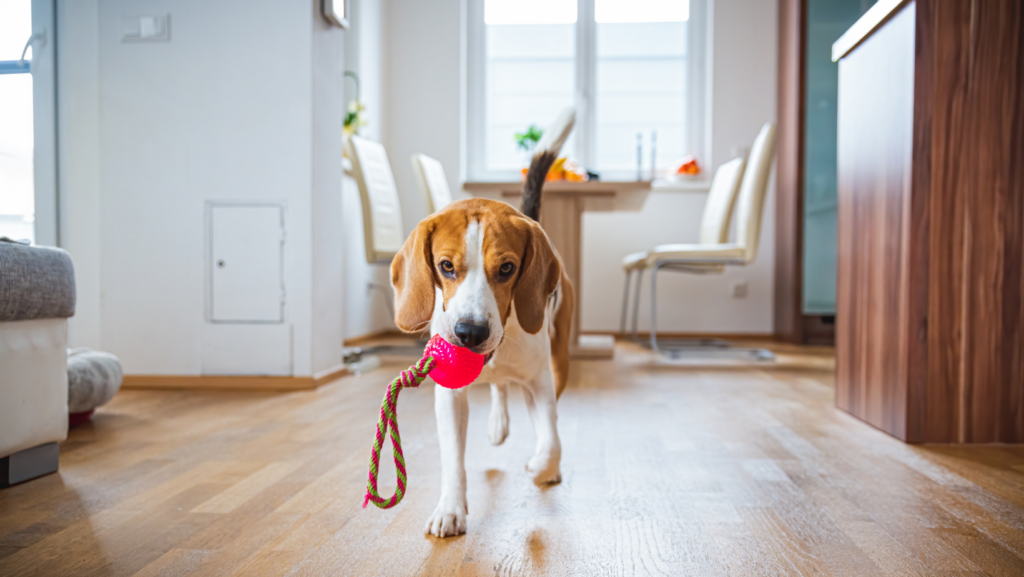
While all dogs, including yours, love to play with toys, the nature of the toy also becomes crucial. For example, to ensure that your dog’s teeth remain in perfect condition, you should always buy soft toys that will not chip or crack your dog’s teeth.
Toys made of rubber or simple tennis ball can be good options as they ensure that your dog’s teeth are not harmed when it plays.
Also Read: 8 Best Dog Bones For Aggressive Chewers
6. Take Your Dog to a Vet to Get Their Teeth Cleaned
To ensure your dog’s teeth remain clean and strong, take it to a vet regularly. You can also get the help of professional tooth-cleaning services if required.
The best course of action for treating canine cavities will depend on how much harm has already been done.
Small doses of fluoride may be used to protect the teeth if the cavity has not yet formed since the negative ion will encourage the remineralization of the covered tooth.
At your veterinarian’s office, tartar visible along the teeth can be removed using ultrasonic dental equipment.
It is impossible to stop a cavity from forming once it has started. Therefore, enamel and dentin that are damaged during the early phases of cavity formation are removed. After that, the crown is changed.
The affected tooth will require root canal therapy once the pulp is infected and blood flow is blocked.
What Causes Black Gums in Dogs?
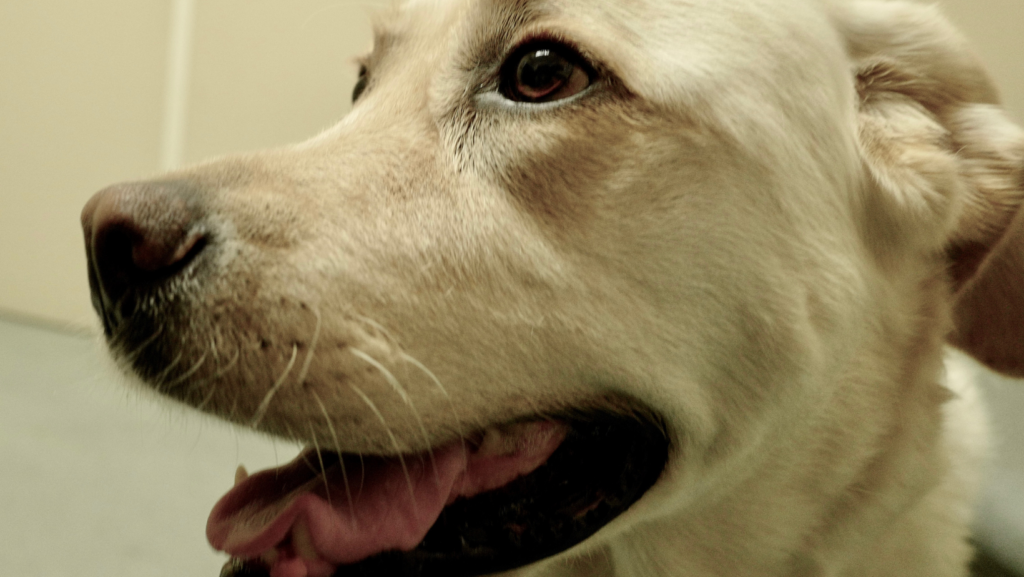
Usually, it is seen that dogs with dark skin have gums that are naturally dark or black. Some dogs have speckled skin, which also shows up on their gums. If your dog’s gums haven’t always been black, there may be an underlying medical condition or gum disease.
The most important thing to determine is whether your dog’s gums have always been black. You shouldn’t be concerned if they have always been that way because it is a normal aspect of their coloring. But if it’s a recent occurrence, you should discuss it with a medical expert.
Consulting your dog’s veterinarian is the most important step. A medical expert who is familiar with your dog and its needs is a valuable resource that you ought to use. Look up your dog’s breed and skin tone, and ask your vet what you should do to maintain good dental hygiene.
How to Prevent Dogs Gum Disease?
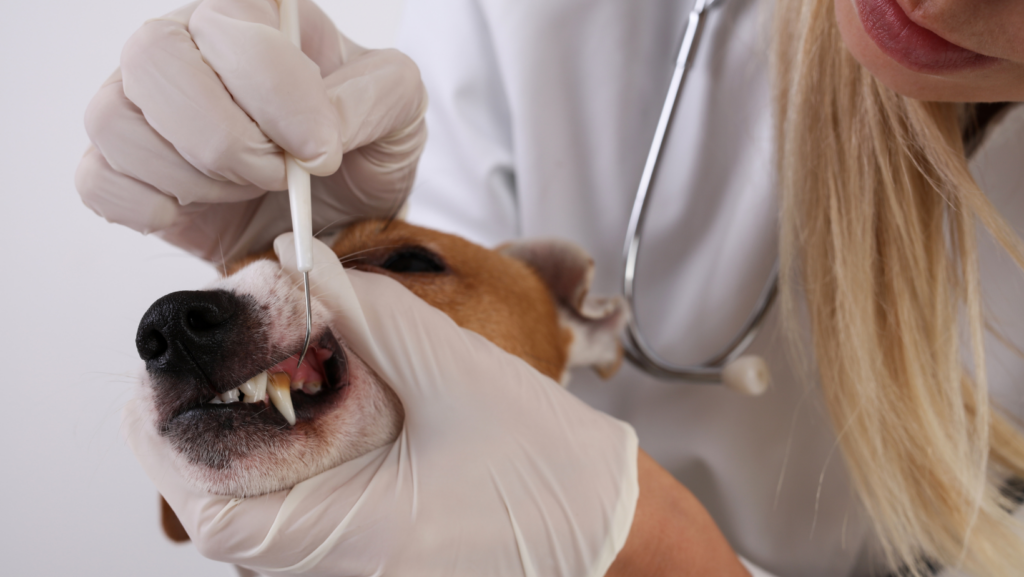
It is best to naturally prevent your dog from having gum disease. Follow the steps mentioned earlier in the blog to take care of your dog’s dental health.
You can brush your dog’s teeth frequently and assist them with mouthwash. Ensure they are fed a dental-friendly diet to prevent their gums from becoming irritated and black.
Apart from this, take care of the regular lifestyle habits of your pet, including their food intake, etc. Avoid overfeeding your dog as another strategy to prevent gum disease. Dogs’ teeth and gums can deteriorate because their bodies are not designed to consume large amounts of sugar.
Talking to a professional familiar with your pet’s health is always recommended, regardless of your pet’s age, natural discoloration, or oral disease.
There are medications and therapies for gum disorders. Your dog’s gums and dental health can be saved if you catch it early enough. Without the right care, you may spend more money and time on your dog’s future dental care.
Concluding Remarks
By now, you must have gained a fair idea of the possible reasons for this condition. However, suppose bacteria cause the underlying condition. In that case, you need to address the issue as soon as possible. It can indicate that your dog is probably suffering from other serious conditions like periodontal disease and dental cavities.
Although the causes behind the black line may be alarming for dog parents, the issue can be quickly resolved as long as proper medical attention is given.
Yet, as a dog parent, you don’t want your dog to suffer in silence. Hence, the earlier you implement some preventive measures as soon as possible, which will maintain your dog’s health and let it live its life to the fullest!
Meet Madison Phillips, your compassionate guide to pet well-being. With experience from VCA Animal Hospitals and Laxton Vet Clinics Bellaire Inc. Madison honed her skills and embraced the balance of medical expertise and compassion, through her articles, she simplifies pet care, whether you’re a newbie or an experienced pet parent.

